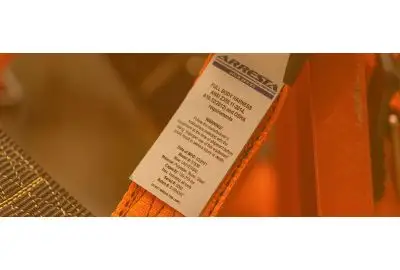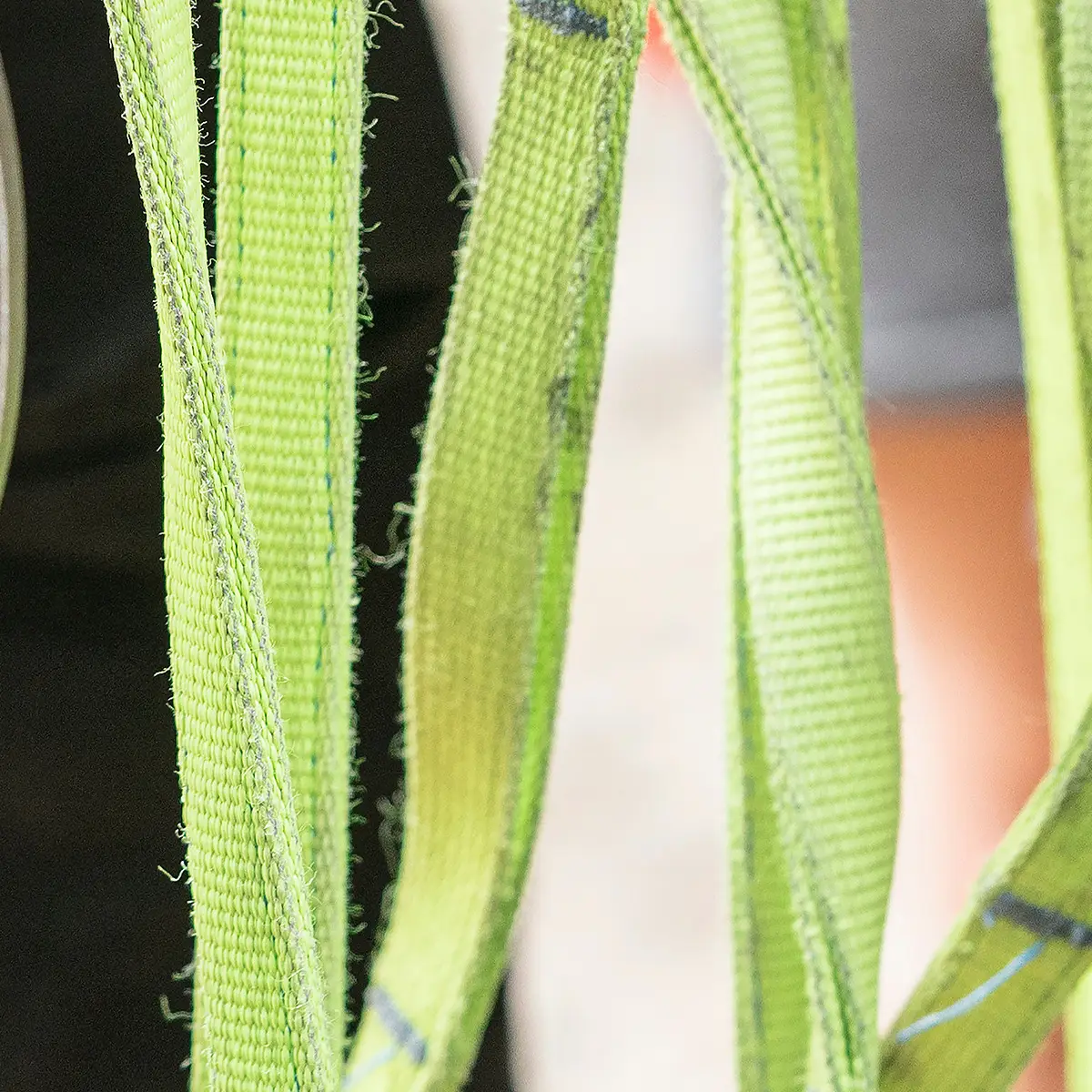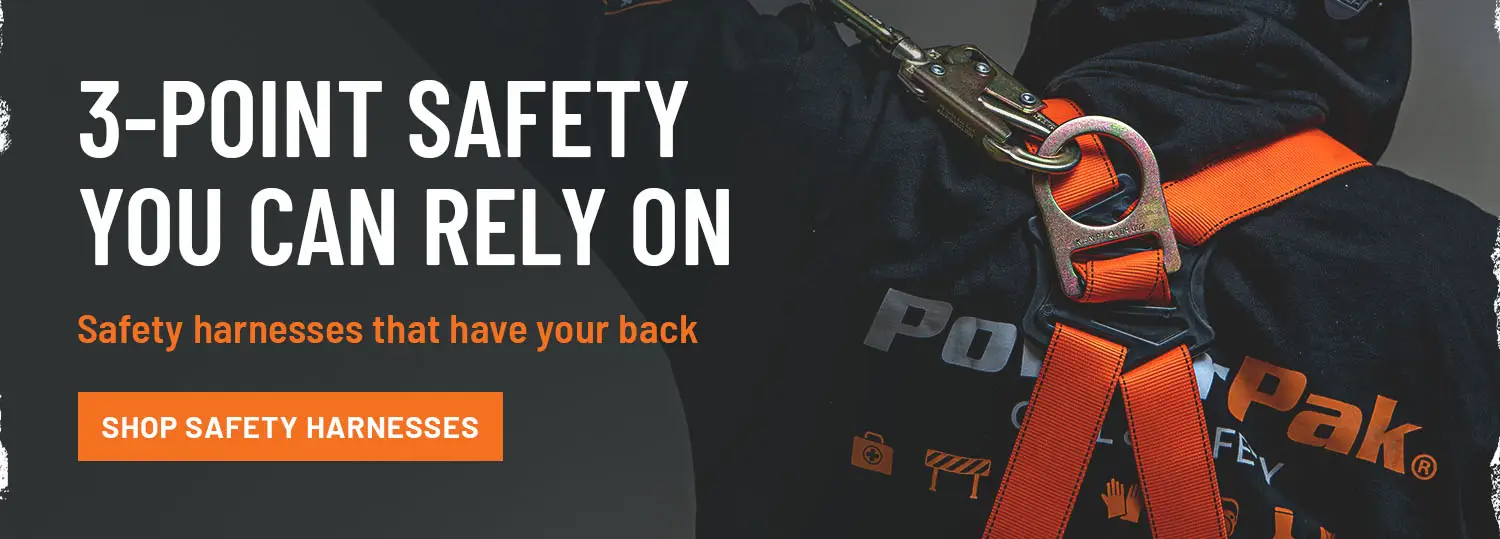What You Need to Know About Safety Harnesses Expiring

Construction is one of the most hazardous industries, with many risks involved in daily operations. According to OSHA, numerous fatalities occur each year due to unsafe working conditions. That's why safety measures are not just important — they're essential for protecting workers and ensuring compliance with strict regulations.
In addition to training, construction companies must provide their employees with reliable personal protective equipment (PPE), such as hard hats, gloves, and harnesses. These items are crucial for reducing the risk of injury or even death in high-risk environments. However, the key to maintaining safety lies in regular maintenance and proper use of this gear.
Tracking Your Safety Equipment
Keeping track of all safety mandates, providing relevant training, and issuing appropriate PPE can be complex. It’s also critical to ensure that all equipment is regularly inspected and replaced when necessary to maintain its effectiveness. This process helps avoid potential hazards and ensures compliance with OSHA standards.
Many workers know that hard hats have a five-year expiration date, which leads them to assume that other safety gear follows similar rules. But when it comes to safety harnesses, the question often arises: "When does my harness expire?" The answer isn’t as straightforward as you might think.
The Dangers of a Fixed Expiration Date
Setting a fixed expiration date for safety equipment may seem practical, but it can actually be misleading and dangerous. This approach ignores the various factors that influence the performance and longevity of your harness. A harness's lifespan depends on several variables, including usage frequency, environmental conditions, and material quality.
For example, if a harness is damaged after just six months of use, it should be immediately retired, regardless of any pre-set expiration date. On the other hand, a harness used infrequently might last much longer. Relying solely on a set timeline can create a false sense of security, which could lead to serious consequences.


How Long Can a Safety Harness Last?
The short answer is that a safety harness doesn't have an official expiration date. As long as it remains in good condition, it can continue to be used safely. However, determining what “good condition†means can be subjective. OSHA requires that fall protection harnesses be inspected regularly to ensure they meet safety standards.
To stay compliant with OSHA, all fall protection harnesses must undergo regular inspections. Read our full guide on fall protection here.
While there is no set expiration date, certain factors can significantly reduce the lifespan of a harness. Let’s explore what can cause a harness to fail inspection or become unsafe over time.
Factors That Reduce a Harness's Lifespan
One of the biggest threats to a harness’s lifespan is using it beyond its intended purpose. These harnesses are designed specifically for use in a personal fall arrest system (PFAS). They are built to withstand a single fall, meaning that once a fall occurs, the harness must be decommissioned and replaced immediately.
Other common issues that can shorten a harness's life include:
- Heavy use: leading to wear and tear over time
- Chemical exposure: potentially weakening the structural integrity
- UV damage from sunlight: degrading the webbing material
- Improper storage: exposing the harness to harsh elements


To maximize the lifespan of your harness, store it in a dry, protected area when not in use. For instance, placing it in your truck’s under-seat compartment or hanging it by the D-ring on a coat rack at the job site will help protect it from damage, chemical exposure, and UV rays.
By taking care of your safety gear, you not only extend its life but also increase the chances of passing regular inspections. Now that we’ve covered how to maintain your harness, let’s look at the types of inspections required to ensure it stays safe.
Types of Safety Harness Inspections
Inspecting a safety harness isn’t a one-time task. Since there’s no official expiration date, the only way to determine if a harness is still safe is through regular checks. There are three main types of inspections you should perform: initial, field, and formal.
Initial Inspection Before Use
Before using a new harness, always conduct a thorough inspection. This step is critical because any manufacturing defect could pose a life-threatening risk. Check for signs of damage, wear, or defects in the stitching, buckles, and straps.
Field Inspection
Each employee should perform a quick field inspection before every use. This involves checking for visible damage, mildew, or wear. OSHA requires these checks to be done before each shift to ensure the harness is in working order.
Formal Inspection
ANSI standards require a formal inspection at least once a year. While not mandated by OSHA, it's a best practice for companies to have a trained professional inspect their harnesses regularly. During this process, the inspector reviews the harness against a checklist and marks it as either pass or fail.
Who Is Responsible for Daily Inspections?
Employees are responsible for conducting field inspections before each use, while a qualified person handles formal inspections. OSHA requires employers to train workers on how to properly inspect their harnesses. This training should be provided by a competent individual who understands safety standards and can identify hazards.
OSHA defines a competent person as someone who has the knowledge, training, and authority to recognize and correct hazards. This role is typically filled by a company safety officer or an external inspector.
It’s also important to note that the end user should complete the first-use inspection along with a competent person. This dual-check system helps ensure that no potential issues go unnoticed.
How to Inspect a Safety Harness
To properly inspect your harness, refer to the manufacturer's manual for specific instructions. Here are some general steps you can follow:
Steps to Inspect a Full-Body Safety Harness
- Hold the harness by the D-ring and let it hang, then shake it gently.
- Check that the impact indicator tags are present and undamaged.
- Inspect the D-ring for bends, cracks, or discoloration.
- Test the chest-strap buckles to ensure they lock properly.
- Check the adjusters for smooth operation and proper locking.
- Examine the leg straps, buckles, and grommets for wear or damage.
- Visually and physically inspect the webbing on both sides for thinning, fraying, cuts, or unraveling.
- Give the harness a final pass or fail rating based on your findings.
If you notice any of the following issues, the harness should be removed from service immediately: frayed straps, bent or broken buckles, or webbing that has been exposed to chemicals.
Common Reasons a Harness Fails Inspection
If your harness fails inspection, it should be taken out of commission right away. Here are some red flags that indicate a harness is unsafe:
- Illegible tags or labels
- Missing or torn impact indicator tags
- Damaged or distorted D-rings
- Malfunctioning chest-strap buckles
- Broken spring on adjusters
- Webbing not moving freely through adjusters
- Damaged grommets
- Thinning, damaged, or unraveling webbing
- Loose or missing stitches in webbing
- Evidence of burn or chemical exposure
- Missing or loose components
- Unapproved modifications
- Corrosion
If any of these issues are found, the harness must be replaced immediately. In addition, don’t forget to check other parts of your fall protection system, like lanyards and retractables. Learn more about retractable systems here.
Ready to Purchase New Safety Harnesses?
PowerPak is committed to providing high-quality safety equipment. If you're looking to buy a new harness for backup or for your next project, we can get you the gear you need with same-day shipping. Explore our collection of 3-point safety harnesses that meet or exceed ANSI Z359.11-2014 and A10.32-2012 standards.


Leapmotor Mini,Leapmotor Car for Sale,Leapmotor Car Price,Leapmotor Cars Dealership
Henan Wangdao Automobile Service Co., Ltd. , https://www.wangdaocars.com